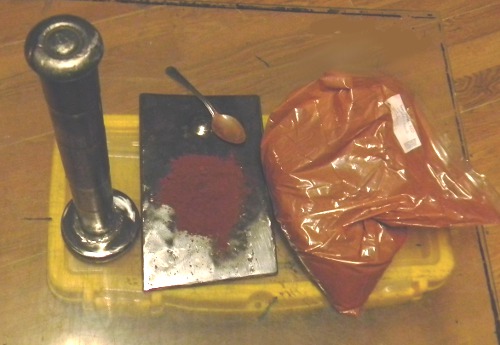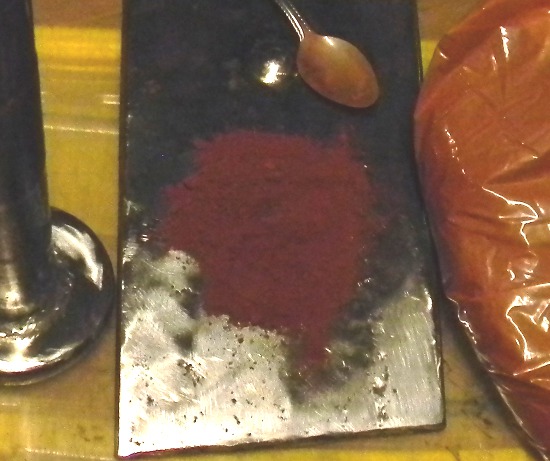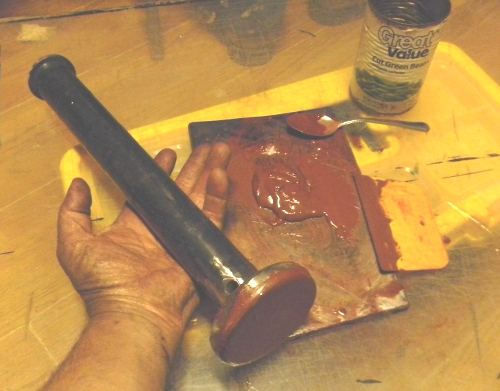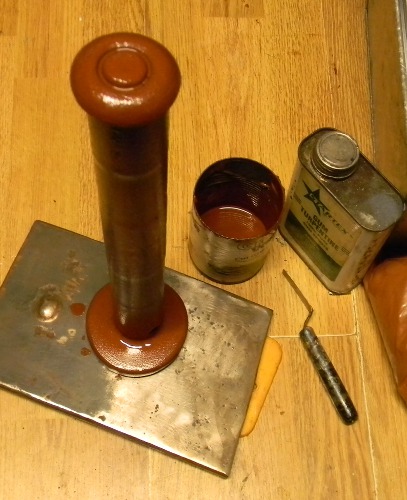I’m in the process of restoring an old piece of equipment for a client. I’m using paint stripper to get the old paint off, instead of power tools. When I got down to the metal, I noticed something I’ve seen on other projects; a layer of brown dusty material. There is no way the painters would have left the surface in that condition, besides, I’ve seen it on other equipment, I doubt there would be widespread mistakes of the same kind. Lately I’ve been wanting to start making period paints, so I’ve been investigating how they were made. Some were made with iron oxide mixed into linseed oil. The pictures I’ve seen of the pigment vary quite a bit in color, so at this point, I think it’s likely that this was primed with an iron oxide paint. The paint stripper probably broke down the binder (linseed oil) and left the powder.
There is no way the painters would have left the surface in that condition, besides, I’ve seen it on other equipment, I doubt there would be widespread mistakes of the same kind. Lately I’ve been wanting to start making period paints, so I’ve been investigating how they were made. Some were made with iron oxide mixed into linseed oil. The pictures I’ve seen of the pigment vary quite a bit in color, so at this point, I think it’s likely that this was primed with an iron oxide paint. The paint stripper probably broke down the binder (linseed oil) and left the powder.
It turns out that iron oxide powder is dirt cheap, $4.99 for 5 lb. What I needed was a tool called a Muller. They’re made of glass, and the larger one is around $70. I decided to make one from steel. I looked around for a small handle, but saw this railroad freight car pin, and used it. I welded it to a round steel base I made, and that worked really well. You can see it in the picture below.  Here’s what the powder looks like:
Here’s what the powder looks like: In the next picture, you can get a better idea of the size of the tool. The length and weight of the handle make it work very well. It the middle of the picture is the paste made by grinding the powder with linseed oil. The plate I’m grinding on is a piece of leaf spring from a 1946 diesel locomotive. What’s interesting is how heavy the paste is. The powder takes up less space when wet. Grinding is mostly making sure there aren’t lumps in the paste. In the last picture, I’ve added more oil to the paste, along with some Japan drier, then applied it to the tool itself. My plan is to see if I can wet sand this primer, and use it to fill small pits in the steel surface. I’ll post the results later.
In the next picture, you can get a better idea of the size of the tool. The length and weight of the handle make it work very well. It the middle of the picture is the paste made by grinding the powder with linseed oil. The plate I’m grinding on is a piece of leaf spring from a 1946 diesel locomotive. What’s interesting is how heavy the paste is. The powder takes up less space when wet. Grinding is mostly making sure there aren’t lumps in the paste. In the last picture, I’ve added more oil to the paste, along with some Japan drier, then applied it to the tool itself. My plan is to see if I can wet sand this primer, and use it to fill small pits in the steel surface. I’ll post the results later.

